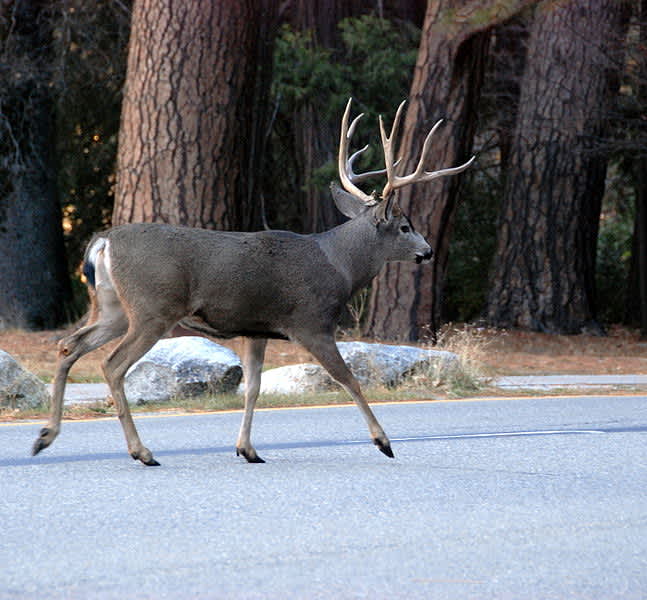Hunters Called to Manage 2,400 “Destructive” Mule Deer in Santa Catalina
OutdoorHub Reporters 06.09.14

Although it may not look like it, the island of Santa Catalina in southern California was originally a barren rock. All wildlife now living on the island arrived over the ocean, and not all species are welcome. The Catalina Island Conservancy spent years removing invasive wildlife and preserving the island’s more traditional inhabitants—foxes, bald eagles, and plants that occur nowhere else in the world. The threats to the island’s delicate ecological balance are many, such as a herd of bison brought over in the early 20th century for a film shoot. Conservationists have removed thousands of non-native goats, pigs, and bison but now they face arguably their biggest challenge yet. There are 2,400 mule deer on the island, and it will be up to hunters to quell them.
Currently the mule deer population on Catalina is roughly over half that of the humans living on the island. Signs of their presence are obvious in the stripped saplings and other damage they leave behind. If left unchecked, the deer will eventually eat themselves into mass starvation and cripple the ecology of the island in the process.
“This year, 60% of the 500 tags we issue will be for does,” Catalina Island Conservancy spokesman John Mack told the Los Angeles Times. “Since each doe annually produces twins, tagging one means you’ve removed three deer from the island that year.”
The conservancy is working with the California Department of Fish and Wildlife to work out a management plan that places the emphasis on does. Mack says they are currently considering an 80 percent doe-heavy harvest to keep deer numbers low. The Associated Press reports that hunters usually take 350 deer a year, but local biologists are advocating for a more aggressive approach. It is not uncommon to see deer foraging in private gardens or even strolling through residential neighborhoods. Effects of drought and low rainfall are also exacerbating the damage that deer do to vital plants and trees.
Officials are also keen to close the book on another major invasive species to the island. Previous attempts to remove non-native animals have been successful in restoring native species. There are currently only a handful of goats left on the island and a single feral pig. The bison herd was also reduced from 350 to 138. There are no large predators on Catalina island—at least, not large enough to pose a danger to large herbivores like mule deer.
The conservancy is also asking residents to stop feeding the deer. Enticing the animals with lettuce and pet food is a sure way to make the deer presence in human neighborhoods a permanent one. Processed food also contains chemicals harmful to the deer.
Mack says that if the mule deer population begins to decline, the conservancy will be able to focus on other projects such as restoring native vegetation. Catalina’s deer hunting season runs from July to December.
Edit added 6/11/2014: This article originally stated that the island’s bison population was expected to drop in the future. OutdoorHub has been informed that this does not appear to be the case.

